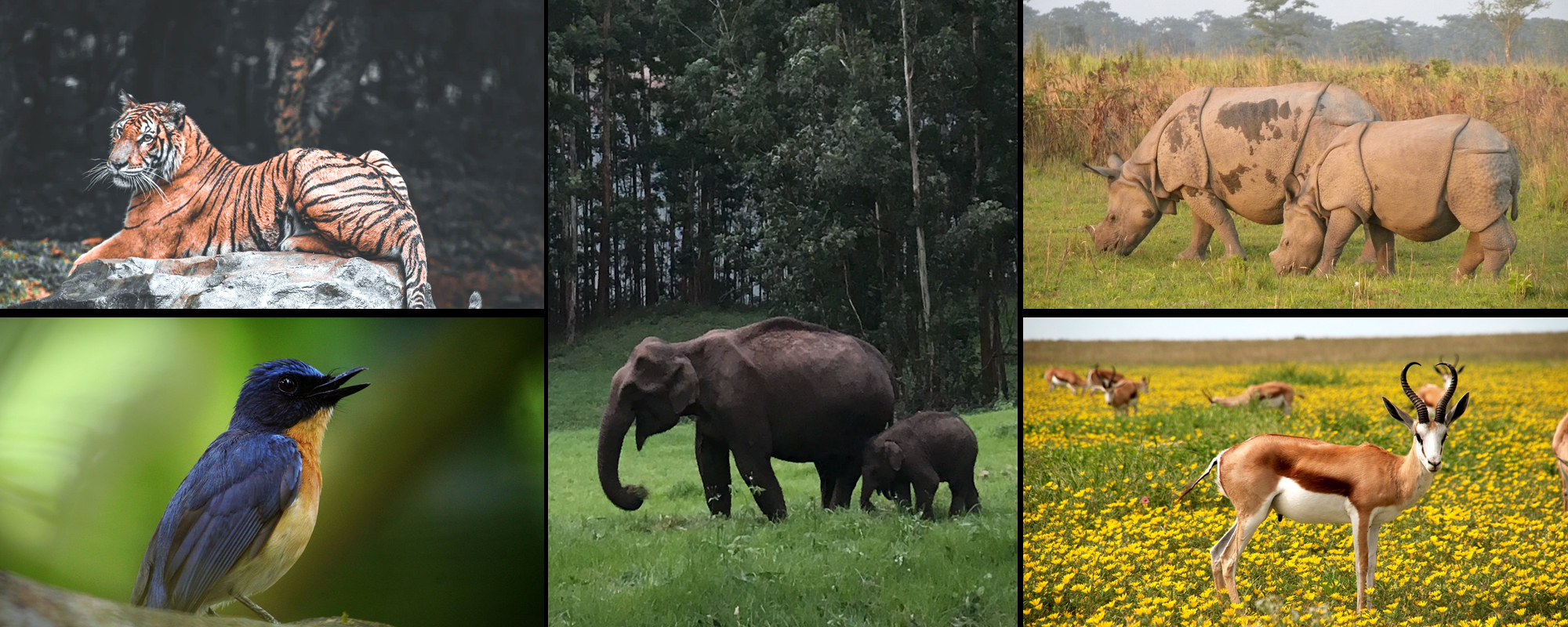
Situated half-an-hour drive away from Srinagar in Jammu and Kashmir, Dachigam National Park is a wildlife area that witnesses a horde of visitors coming in to experience the breathtaking views and exotic flora and fauna species. The name ‘Dachigam’ literally translates to ‘ten villages’ as total of ten villages were transferred to create space for the park. Spanning across in an expanse of over 141sq. km, the park is separated into two sections namely Upper Dachigam and Lower Dachigam due to its variation in altitude. The park has been a preserved area since 1910, formerly under the Maharajas and later under the government jurisdiction, it was given a status of a National Park in the year 1981.
Renowned for the endangered Hangul or the Kashmiri Stag (a species of Red Deer), Dachigam National Park has a picturesque and spectacular landscape surrounded by lush green valleys that are enhanced by some of the most mesmerizing species of flora and fauna. Nestled amidst the mountain ranges, the altitude of the park varies from 1600m to 4200m above sea level. The national park can be visited at any given time of the year because the landscape changes to a different scenic beauty in every different season. It is blanketed with snow during Winters and the lush green valley perfectly contrasts with the snow during the Spring season along with many blossoming trees and flowers. The Summer melts the snow to unveil the mighty waterfalls and streams and the Autumn makes the park appear a beautiful shade of brown, red, yellow, and orange. An unpolluted and colorful place, Dachigam National Park is an ideal place for a family visit and a paradise for nature and wildlife lovers.
The best way to explore the park is by trekking into the thick dense forests. The terrain in the lower parts of the park is easy to ascent while the upper region might need you to have enough physical strength to complete the excursion and sightsee the area to the fullest.
There are around 500 species of herbs, 50 species of trees, and around 20 species of shrubs available in the park. Some of the dominant tree species are Wild Cherry, Pear, Plum, Peach, Apple, Apricot, Walnut, Chestnut, Oak, Willow, Poplar, Chinar, Birch, Pine, and Elm.
Mammals: Hangul (Kashmiri Stag), Himalayan Black Bear, Long-Tailed Marmots, Leopard, Jackal, Red Fox, Himalayan Weasel, Yellow-Throated Marten, Musk Deer, Wild Goat species like Markhor and Ibex, etc.
Birds: Himalayan Monal, Lammergeier, Blue Magpie, Black Bulbul, Cinnamon Sparrows, Kashmir Flycatcher, Monal Pheasant, Crimson Tragopan, Blood Pheasant, Koklass Pheasant, Golden Eagle, Bearded Vulture, etc.
The park experiences a moderate temperature throughout the year. Summers are never scorching and the snowfall can be seen every winters. The weather gets a bit warmer from April and lasts till June with the temperature varying from 14 degrees Celsius to 8 degrees Celsius. July and August experience light showers.
Despite being very cold during the winters, the ideal time to visit this place is during the winters when the family of Hangul can be spotted in the lower valleys of the park. You can also visit the park during the summers for a breathtaking view of the valley and the flora in all its glory.
Nearest Train Station: The nearest train station is Srinagar Railway Station at about 32km from the park.
Nearest Airport: The nearest airport is Sheikh Ul Alam International airport in Srinagar at a distance of 40km from the park.
Road Accessibility : The park is connected to all the major cities and places through a well-maintained road network and then nearest bust stand from Dachigam National Park is in Lalchowk at 22km.
Copyright 2012-2022 Indiamap Digital Pvt Ltd. All rights reserved. Privacy Policy | Terms of Use